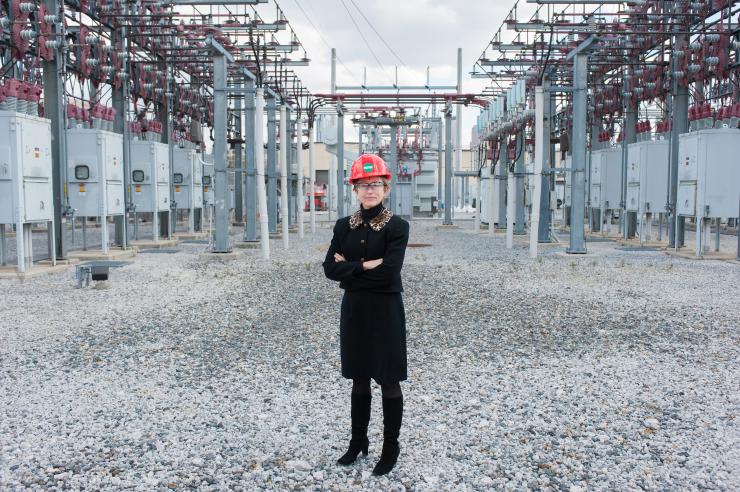Researchers Work to Avoid Potholes and Pitfalls on the Road to Autonomous Vehicles
Apr 17, 2016 — Atlanta, GA

At the Georgia Tech Autonomous Racing Facility, researchers are studying a one-fifth-scale autonomous vehicle as it traverses a dirt track. The work will help the engineers understand how to help driverless vehicles face the risky and unusual road conditions of the real world. (Credit: Rob Felt, Georgia Tech)
At a dirt test track near the Georgia Institute of Technology campus, researchers monitor a scale-model autonomous car as it drifts around corners at a blistering eight meters per second – equivalent to 90 miles per hour in a full-size vehicle. Pushing this car to its limits could help make full-size driverless vehicles more stable in risky road conditions.
This unique one-fifth-scale device is just one of many research efforts aimed at helping the autonomous vehicle revolution happen successfully and safely.
Self-driving cars are unquestionably coming, guided variously by radar, lidar, motion sensors, cameras, GPS, and plenty of onboard computation. Already, semi-autonomous prototypes are operating under controlled conditions in California, and speculation about future autonomy includes visions of commuters napping through drive-time, high-speed convoys of networked big-rigs, and a huge drop in accidents as robotic vehicles take over from impaired and distracted humans.
Yet these are only visions, where generalizations rule and few facts are established. At Georgia Tech, research focuses on the elusive but critical details of this phenomenon, as investigators from disciplines as diverse as industrial systems, design, engineering, computing, and psychology are developing a roadmap to robotic vehicles.
Researchers at Georgia Tech generally agree that a long period of adjustment, including generations of semi-autonomous vehicles, will be needed to reach completely autonomous transport on a large scale. Estimates of the time required vary from a couple of decades to more than half a century.
“Fully autonomous transport will require absolutely reliable navigation systems, major changes in highway infrastructure, and traffic control that’s synched to the vehicle, plus new fueling, insurance, financing, and manufacturing paradigms,” said Vivek Ghosal, a professor in Georgia Tech’s School of Economics, who studies the automotive industry. “Yes, we have prototypes, but the operationalizing of autonomy is still far away.”
A four-level model of the vehicular-automation process is now widely accepted. Level one denotes today’s driver-dependent cars; level two involves intelligent cruise and lane control with some automatic braking; level three indicates semi-autonomous vehicles that drive themselves but cede control to a human when conditions demand; and level four means fully autonomous with no driver controls.
Researchers at Georgia Tech, focusing on the gritty details, have spotlighted a list of complications that include:
- Human-machine interaction issues.
- Costly highway infrastructure changes.
- Unpredictable traffic effects.
- Conflicts between self-driving and human-driven vehicles.
- Guidance system reliability concerns.
- Vehicle ownership, liability, and business model shifts.
- Potential for major changes to the urban landscape.
This article takes a look at some of the research currently underway at Georgia Tech related to self-driving vehicles.
Read the complete feature on the Research Horizons website

The presence of millions of high-capacity car batteries could have major implications for the U.S. electric grid. Valerie Thomas, who researches renewable energy, is studying the interplay between electric vehicles and the grid. (Credit: Fitrah Hamid, Georgia Tech)




